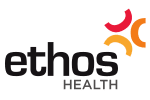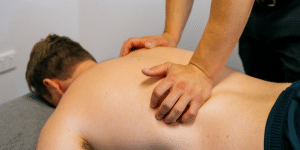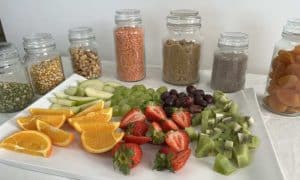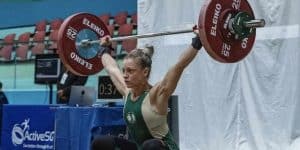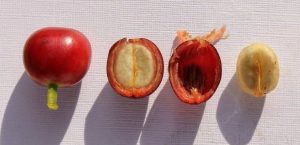Sports Nutrition: Improving your performance

Good nutrition can significantly improve sporting performance, just as poor nutrition can hinder it. A sports nutrition plan enables everyone from weekend warriors to elite athletes understand how their dietary intake affects performance in training and competition. Learn more about some of the most important aspects of sports nutrition, including:
• Nutritional adequacy
• Carbohydrate – volume and timing
• Pre and in-event meals
• Protein – sources and supplements
• Fat, both good and bad
• Hydration and sports drinks
• Recovery
Nutritional adequacy
Whilst there are sports-specific nutrition and fuelling strategies to optimise performance, these will only be effective if you meet the fundamental elements of nutritional adequacy, including eating from all 5 food groups.
Eating from all food groups is important to:
- Meet nutritional requirements
- Reduce risk of jury and fatigue
- Improve performance
- Aid recovery
- Prevent chronic disease
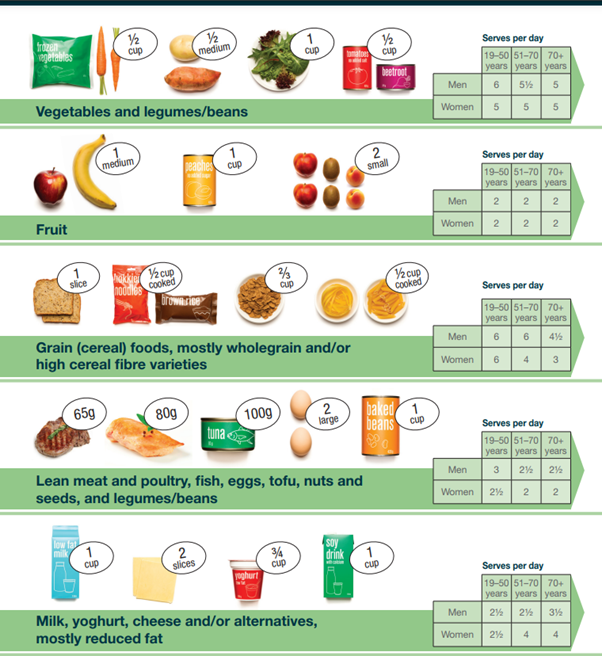
Athlete’s plate
Our body needs different types of fuel according to our level of activity. The plate graphics below show how meals can be adjusted to support different training volumes.
On rest days, or light training days, aim for
- ½ plate of vegetables or salad
- ¼ plate protein
- ¼ carbohydrates
On moderate training days, aim for
- 1/3 plate vegetables or salad
- 1/3 plate protein
- 1/3 carbohydrates
On heavy training days/ game days, aim for
- ½ plate carbohydrates
- ¼ plate protein
- ¼ plate vegetables
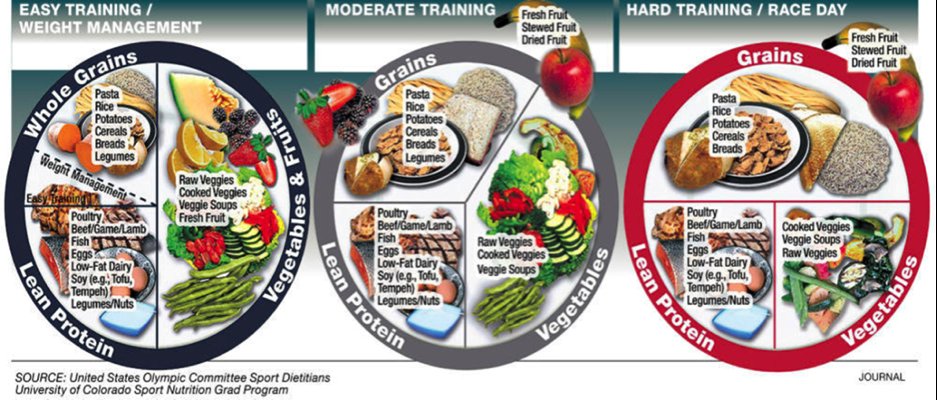
Carbohydrates
Regular meals
If you are training regularly with sessions longer than 60 minutes you should be focusing on carbohydrate-rich meals across the day, not just around your training sessions. Carbohydrates are the key fuel source during exercise. If you are exercising regularly, you will be tapping into those fuel stores, so they need to be replenished to optimise performance and recovery (Kerksick, 2018).
Pre- and during-event meals
Carbohydrates are broken down into glucose then used as energy. Glucose is stored as glycogen in muscle and liver in limited amounts (500-600g) which is depleted during activity.
Most of the carbohydrates you eat are stored as glycogen in your muscles and liver. During exercise glycogen is converted to glucose which is used to provide energy. Carbohydrate can be burnt as fuel at 4-5g carbohydrate/min. Thus, the body stores enough carbohydrate fuel for 2 to 4 hours of high-intensity exercise. This is why you need to make sure your glycogen stores are full before you start the event, and replenish them during and/or after the event.
The pre-event meal is 1-4 hours before training or a game:
- Aim for 1-4g of carbohydrate per kilogram of body weight
- If you have early starts or don’t want a big breakfast try to eat (or drink) a small carbohydrate snack prior to your training or competition.
During longer events (>2 ½ hours):
- Aim for 1g of carbohydrate per kg of body weight per hour of exercise (Louise Burke, 2015).
- Focus on the use of low fibre carbohydrate foods and meals to reduce the risk of an upset stomach, for example; sandwiches (e.g. jam or honey), fruit (e.g. fresh or dried), sports or muesli bars, potato crisps or specially formulated gels.

Protein
Regular meals
Adequate protein essential for strength, endurance and recovery (Louise Burke & Deakin, 2015). Try to consume 3-4 protein-rich meals throughout the day, accompanied by carbohydrates. Carbohydrates are important to help your body absorb protein and build muscle. For example, eggs and wholegrain toast for breakfast, chicken salad sandwich for lunch, steak with mash and vegetables for dinner.
For the general population the recommended dietary intake of protein is 0.8g/kg of body weight/day. For athletes undertaking higher volumes of training, protein recommendations can be as high as 1.6-2.4g/kgBW for men and 1.4-2.2g/kgBW for women. The higher food intakes of these individuals generally mean that they meet requirements without needing supplements.
Post exercise
Ideally, you want to consume 25-30g of protein within an hour of finishing endurance training or heavy exercise. The best sources of protein are chicken/beef/lamb/pork (100g serve provides 30g protein), eggs (2 eggs provide 12g protein), high protein yogurts (160g serve provides 15g protein), or vegetarian options (100g tofu provides 10g protein, or 220g kidney beans provides 13g protein). Commercially available protein powders may also be a convenient option. Athletes should ensure these have been batch-tested to avoid any inadvertent positive drug tests.
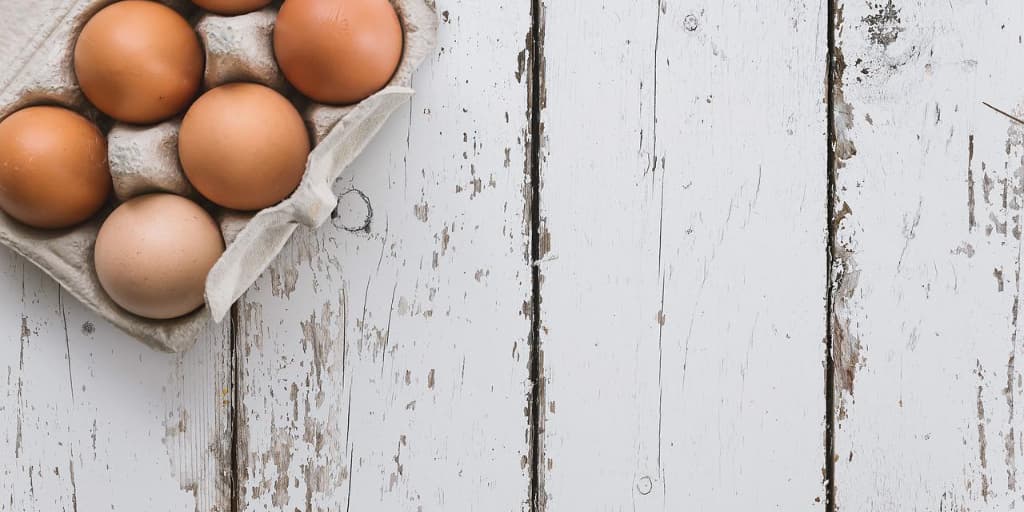
Fat
Fat is an essential component of a healthy diet, regardless of activity levels. Fat has several roles in the body including assisting in the absorption of fat-soluble vitamins, hormone production and providing energy for lower intensity exercise (NSWIS, 2020). Fat is contained in dairy foods and meat, but when selecting other sources of fat focus on healthier poly- and mono-unsaturated fats. For example, nuts, fatty fish, avocados, replacing butter with margarine and cooking oils (extra virgin olive oil is best).
Hydration
During intense exercise, and depending on the conditions you can lose up to 1-3L of fluid per hour. Fluid losses greater than 2% body weight will result in dehydration and hinder performance (Von Duvillard SP, 2004). As a general recommendation aim to replace 200-300 mls of fluid every 15-20 mins (Louise Burke, 2015). Fluids and or foods with electrolytes will be needed when exercising for extended periods and/or due to high sweat rates.
The information in the paragraph above is general in nature, as each individual has unique needs. When a dietitian is developing a sports nutrition plan they would consider:
- Time
- Sweat losses
- Temperature and humidity
- Taste preference
Recovery
Recovery is an important aspect of an athlete’s training schedule. To optimise recovery the following is recommended:
- RESTORATION of muscle and liver glycogen stores (refuelling)
- REPLACEMENT of fluid and electrolytes lost in sweat (rehydration)
- PROTEIN synthesis for repair and adaptation (rebuilding)
- RESPONSE of other systems such as the immune, inflammatory and antioxidant systems
(Louise Burke, 2015)
If you would like more personalised advice book an appointment online with our Dietitians Rowan or Scarlett or call us on (02) 4962 8700
Author: Scarlett Gray, Dietitian
References
- Colorado, T. U. (n.d.). The Athlete’s Plate. Retrieved from The University of Colorado: https://swell.uccs.edu/theathletesplate#:~:text=The%20Athlete’s%20Plate%C2%AE%20is,periodized%20training%20and%20competition%20plan.
- Kerksick, C. W. (2018). ISSN exercise & sports nutrition review update: research & recommendations. J Int Soc Sports Nutr. Retrieved from https://doi.org/10.1186/s12970-018-0242-y
- Louise Burke, V. D. (2015). Clinical sports nutrition 5th Edititon.
- NSWIS. (2020). An athlete’s guide to understanding dietary fat. Retrieved from NSWIS: https://www.nswis.com.au/nutrition/an-athletes-guide-to-understanding-dietary-fat/#:~:text=Why%20do%20athletes%20need%20dietary,organs%20and%20aiding%20hormone%20production.
- Von Duvillard SP, B. W. (2004). Fluids and hydration in prolonged endurance performance. Nutrition.
